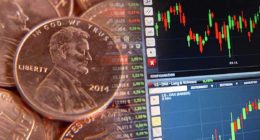3 Different Order Types to Use to Make Money With Penny Stocks & Their Advantages
Penny stocks represent a unique opportunity for investors looking to make significant gains with a relatively small investment. Trading penny stocks requires a strategic approach, utilizing various order types to maximize potential returns. Market orders, limit orders, and stop orders stand out as three crucial tools for navigating the fast-paced environment of penny stocks trading. Market orders provide a quick entry or exit point, ensuring that investors can capitalize on fleeting opportunities. However, they do not guarantee a specific price, making them best suited for stocks with higher trading volumes.
[Read More] Identifying Promising Penny Stocks: 3 Top Tips
On the other hand, limit orders allow investors to specify the price at which they are willing to buy or sell a stock, offering greater control over the transaction. This precision is particularly beneficial when dealing with the volatility characteristic of penny stocks, as it helps in managing risk and securing profits. Stop orders, another vital tool, enable investors to set a predetermined price at which the stock will be bought or sold. This mechanism serves as a safety net, protecting investments from significant losses and helping to lock in profits as stock prices rise.
Investing in penny stocks with these order types requires a deep understanding of market dynamics and a keen eye for detail. The potential for substantial returns makes penny stocks an attractive option for investors aiming to diversify their portfolios and tap into new growth avenues. By leveraging market orders, limit orders, and stop orders effectively, traders can navigate the complexities of penny stocks trading, turning volatility to their advantage and setting the stage for financial success.
3 Different Order Types for Trading Penny Stocks
- Market Orders
- Limit Orders
- Stop Orders
Market Orders
Market orders play a pivotal role in the realm of trading penny stocks, offering investors a swift and efficient means to enter or exit positions. When an investor places a market order, they are expressing their intention to buy or sell a stock immediately at the current market price, ensuring a quick execution of the trade. This immediacy is particularly advantageous in the fast-paced environment of penny stocks trading, where prices can fluctuate dramatically in a short span of time.
By utilizing market orders, investors can capitalize on short-term price movements, seizing opportunities as they arise. This is crucial in the context of penny stocks, where even slight price changes can translate into significant percentage gains. Market orders facilitate a proactive approach to trading, enabling investors to respond promptly to market trends and price shifts.
Moreover, the simplicity of market orders makes them an accessible tool for both novice and experienced traders. There is no need to set specific price points, allowing investors to focus on identifying promising penny stocks and making timely decisions. This straightforward nature of market orders contributes to a streamlined trading experience, reducing complexity and fostering a more intuitive interaction with the market.
Limit Orders
Limit orders serve as a strategic tool in the arsenal of a penny stocks trader, offering precision and control in executing trades. When an investor places a limit order, they set a specific price at which they are willing to buy or sell a stock, ensuring that the trade will only be executed at this price or better. This level of precision is invaluable in the volatile world of penny stocks, where prices can experience significant fluctuations within short periods.
The use of limit orders allows traders to navigate these rapid changes with a calculated approach, setting clear boundaries for their transactions. Investors can identify potential entry and exit points, securing positions at favorable prices and maximizing their potential returns. This is particularly beneficial when dealing with penny stocks, as the ability to lock in profits and manage risk becomes paramount.
[Read More] Investing in Penny Stocks? Where to Start
Furthermore, limit orders provide investors with the flexibility to plan their trades in advance, laying out their strategy and sticking to it without the need to constantly monitor the market. This disciplined approach fosters a more structured trading experience, reducing the impact of emotional decision-making and enhancing the potential for success.
In addition to their role in risk management, limit orders also contribute to a more transparent trading environment. By setting clear price targets, investors can better align their expectations with market realities, fostering a sense of confidence and control. This clarity is crucial when trading penny stocks, as it helps investors navigate the complexities of the market and make informed decisions.
Stop Orders
Stop orders bring a unique dimension to trading penny stocks, offering investors a robust mechanism for risk management and profit maximization. By setting a predetermined price at which a stock will be bought or sold, stop orders act as a safety net, protecting investments from significant losses and helping to lock in gains as prices rise. This proactive approach to managing market fluctuations is particularly crucial in the realm of penny stocks, where rapid price movements are commonplace.
The implementation of stop orders allows traders to define their risk tolerance, establishing clear parameters for when to exit a position. This level of control is invaluable, as it enables investors to navigate the volatile landscape of penny stocks with confidence, ensuring that they are prepared for various market scenarios. Whether aiming to protect against downside risk or secure profits on an upward trend, stop orders provide a strategic solution.
Moreover, stop orders facilitate a disciplined trading strategy, encouraging investors to set rational exit points based on market analysis rather than emotional reactions. This calculated approach is essential in the high-stakes environment of penny stocks, where the potential for substantial returns is accompanied by the need for vigilant risk management.
In addition to their protective functions, stop orders also empower investors to capitalize on momentum, automatically executing trades as specific price thresholds are reached. This ensures that traders can participate in significant market movements, even in their absence, turning volatility into an opportunity for profit.
Which Penny Stocks Are You Watching Right Now?
Penny stocks present a unique and exciting opportunity for investors aiming to achieve substantial returns through a strategic approach to trading. Market orders, limit orders, and stop orders emerge as three pivotal tools in navigating the fast-paced and volatile environment characteristic of penny stocks. Market orders ensure quick execution, allowing traders to seize short-term opportunities and respond promptly to market trends. Limit orders offer precision and control, enabling investors to set specific price points for their trades, managing risk, and maximizing potential returns. Stop orders provide a safety net, protecting investments from significant losses and helping to lock in profits as stock prices fluctuate.
[Read More] Penny Stocks To Buy Today? 4 To Watch Now
Together, these order types empower investors to approach penny stocks trading with confidence, discipline, and a clear strategy. They foster a structured trading experience, reducing the impact of emotional decision-making and enhancing the potential for success. By leveraging these tools effectively, traders can navigate the complexities of penny stocks, turning volatility to their advantage, and setting the stage for financial prosperity. The vibrant and dynamic world of penny stocks trading, with its potential for significant gains, becomes more accessible and navigable with the strategic use of market orders, limit orders, and stop orders.








